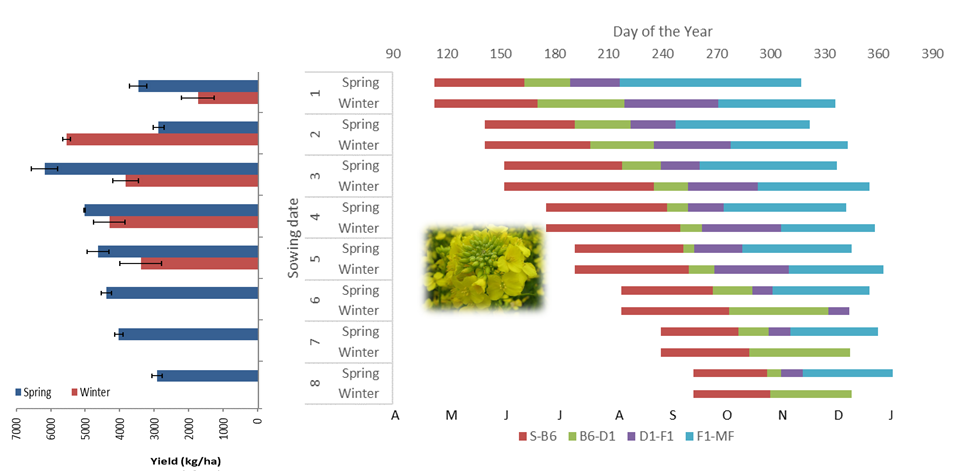Yield and development of winter and spring rapeseed (Brassica napus L.) at different sowing dates in temperate environments
Palabras clave:
fecha de siembra otoñal, fecha de siembra invernal, vernalización, heladasResumen

Optimal sowing dates should match the crop-critical perio with favorable conditions. In rapeseed, growth stages change among spring and winter cultivars. This study characterized changes in rapeseed phenology with varying sowing dates to determine critical periods in both winter and spring cultivars. The trial took place in Balcarce, Argentina, where a winter-type variety and a spring-type were sown on eight different dates in a randomized complete block design with three replicates. Phenology was monitored weekly, and yield was evaluated at the end of the season. Changes in sowing dates and cultivars led to variations in the timing of critical periods. Considering the experimental conditions, the optimal sowing window was between April and July for sowing either rapeseed cultivar. However, the winter variety did not bloom for sowing dates after July, while the spring variety showed yield reductions due to frosts for sowing dates before the end of April. Changes in sowing date resulted in differences in timing and duration of vegetative and reproductive stages, generally leading to shorter crop cycles. However, in late sowing, winter cultivars lengthened their life cycle to the point of not reaching flowering during the growing season.
Highlights:
- Adjustments in sowing dates and cultivar types changed the timing and duration of vegetative and reproductive stages.
- Late sowing extended winter cultivar cycles, occasionally preventing flowering within the season.
- Winter cultivars failed to flower after July sowing, while spring cultivars faced yield reductions from frosts in early sowing.
Descargas

Descargas
Publicado
Cómo citar
Número
Sección
Licencia
Derechos de autor 2018 Revista de la Facultad de Ciencias Agrarias UNCuyo

Esta obra está bajo una licencia internacional Creative Commons Reconocimiento-NoComercial-CompartirIgual 3.0.
Aquellos autores/as que tengan publicaciones con esta revista, aceptan las Políticas Editoriales.










.jpg)




